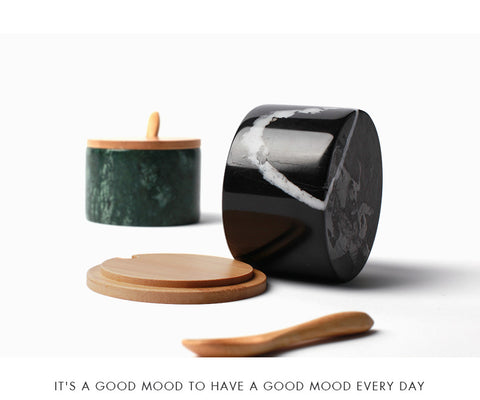- Home
- Shop
- Living
- Blog
- MIKOLITE
- SinterTech
- About
- Gallery
- Sign in
October 03, 2021

A quick Google search of ‘minimalism’ will bring up everything from home decor to living practices. However, there is so much more to minimalism than just the hype.
Leading psychologists from Maryville University explain how social and cultural factors contextualize human behavior which affects how people behave in their environment. And if we're looking at human behavior today, we're seeing a renewed focus on wellness and substantial experiences. Part of it can be chalked up to the many years that people have been spending too connected to technology and caught up with trends.
True enough, our social media feeds often dictate our desires and purchases, tricking our minds into buying the next popular thing. This is despite the fact that we have little need for most of the things we actually consume. In this regard, minimalism is hailed as the answer to living a more meaningful life in a world inundated with material objects.
People are drawn to minimalist living because of its mental benefits, among other perks. Practitioners also mention that this change has given them a wider appreciation of their surroundings and the people around them.
The reasons behind minimalism

Learning to live a minimalist lifestyle requires more than just consuming and buying less. In order to really appreciate what minimalism stands for, you need to understand the reasons why people have chosen this lifestyle. As we said, it goes way beyond trends, and taking on a holistic point of view assures you can maintain it as an entire lifestyle.
Up until recently, the term minimalism was used to describe art movements and certain design techniques. The idea of simple living has been found in old religious doctrines, but the widespread adoption of such a lifestyle rose back to prominence in the wake of a post-Industrial, consumerist society.
It's hard to pin down the emergence of minimalism to a particular figure, but most people credit filmmakers Joshua Fields Millburn and Ryan Nicodemus as the inspiration for starting their journey. The two call themselves "The Minimalists." Throughout the course of their career, they have produced books, podcasts, and documentaries all centering around how to live a simpler lifestyle.
Minimalism in modern times

Marie Kondo is perhaps the most influential minimalist today. Her book The Life-Changing Magic of Tidying Up can be seen in households all over the world, while her show Tidying Up with Marie Kondo continues to draw in new audiences. Kondo’s “spark joy” philosophy encompasses much of the emotional gravitas behind a minimalist lifestyle.
The convenience of shopping, the culture of trends, and other factors have all resulted in a mentality built on instant gratification. But in the end, we often don't even give these items much of another glance. Wellness coach Elizabeth Scott also links physical clutter to increased stress levels and overall poorer health, which is exactly why more people now are looking to alleviate this.
On top of this, people all over the world are adopting minimalism as a small way to help the environment. It goes without saying that the worst effects of climate change can only be solved by institutional changes, but individual efforts like these can make an impact too. Not only that, The Guardian reports that climate change is leading to serious health issues across the globe. Some of its effects include the spread of disease and hampered development in children. The psychological effects of minimalism draw people in, but this link between minimalism and the environment can be equally powerful.
Some changes you can adopt
Adopting a truly minimalist lifestyle can take years of undoing old habits, but it’s not impossible. Here are some steps you can take to start to become a minimalist:
Clothing
Shop at secondhand and vintage stores as much as possible. The very least you can do, of course, is to say no to fast fashion. If you're feeling crafty, you can even try to remake old clothes and turn them into something new.
Learn to mend your clothes. Basic sewing skills can do wonders in saving a garment that would have otherwise ended up in the trash.
Simple environmental friendly minimalist marble wallet designs.
Buy with intention. Not only should you buy only what you really need and want (some suggest waiting a few days to see whether or not you want to buy an item), but you should also invest in quality pieces that will last you for years.
Home
Look into environmentally friendly cleaning products. Or better yet, make your own. For instance, this homemade vinegar solution by guest contributor Jane Sandwood can be used to clean hard surfaces.
Declutter each room. From your living room to your bedroom, be critical and really think about whether you want these items in your life.
Stick to what your storage allows. Make it a habit of looking at your cabinets and shelves and making sure that whatever you buy can fit in them. If you need to buy extra storage, you may be buying too much.
Food
Buy in bulk. Getting nuts and dried fruit in bulk minimizes the amount of plastic wrappers you have lying around. And if you want to bring a snack in your purse, place these in a reusable container.
Eat what you can consume. Food waste is one of the biggest contributors to climate change but is also one of the most easily avoidable.
Bring reusable cutlery and water bottles. However, an article on Vox stresses that buying sustainable products can actually lead to a slippery slope of purchasing more than what you need, so the key is to buy just one cutlery set and one reusable bottle that you’ll always carry with you.
Lifestyle
Lessen your social media usage. Constantly being updated on the latest fashions can pressure you into buying more things for the sake of appearances.
Declutter your inbox. Practicing mindfulness even when it comes to your email can help clear your mind. Writer Elan Morgan suggests classifying your emails according to folders in order to see what you can delete.
Be patient with yourself. Try to adopt minimalist choices little by little rather than overhauling your entire way of living. Understanding what kinds of changes best suit your life will grant you a greater appreciation of this new mindset, but forcing huge changes too quickly may make you frustrated.
Other resources
Minimalism’s popularity means that there are lots of resources available for those who want to learn more about the cause. The Netflix documentary Minimalism is a great place to start, but there are lots of documentaries, books, and podcasts that you can learn from.
The True Cost is another documentary that details what the world of fast fashion is all about. This is a great resource for understanding the human and environmental costs that fuel today’s materialism.
The Slow Home Podcast with Brooke McAlary teaches the philosophy behind slow living, a phrase that’s often used in tandem with minimalism. This podcast is geared more towards overall lifestyle choices.
Andy Courier’s The Abundance of Less chronicles the lives of ten Japanese men and women who have adopted a more mindful way of living in response to Japan’s increasingly urban lifestyle. Courier’s book ties in discussions on spirituality and philosophy, making it a good resource for those who want to connect with minimalist living on a more emotional level.
The frustrating and wonderful thing about minimalism is that it’s an ongoing process. The more you adopt mindful lifestyle choices, the more you’ll be able to see which other parts of your life can be changed for the better.
This piece was exclusively written for mikolmarmi.com
Guestpost By H. Sauvageot
Comments will be approved before showing up.
